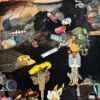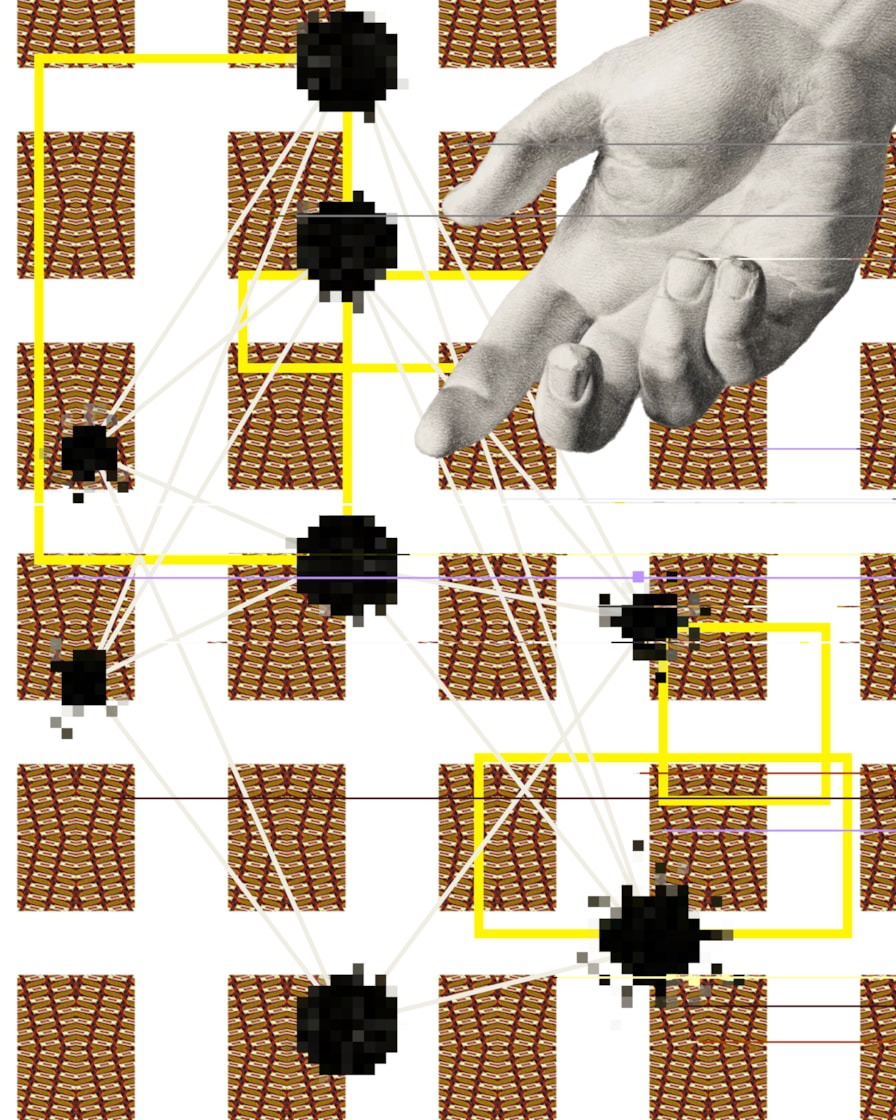ARTIST STATEMENT
My work explores the concept of algorithmic colonialism and its parallels to historical land appropriation. The patterns in the background derive from public domain paintings of the American West during the Manifest Destiny era, digitally manipulated to evoke Indigenous textile traditions. This visual connection honors both the original stewards of the land and the Navajo women who worked at Fairchild Semiconductor, where they meticulously assembled integrated circuits for early computing devices. Their “electrical weaving” was fundamental to revolutionary technologies including Apollo mission guidance systems, yet they received little recognition.
I employ subtle text blanching to mirror how Indigenous contributions are often hidden beneath dominant technological narratives, the fissures encouraging viewers to question this facade. The superimposed yellow classification boxes and neural network structure visualize how modern algorithmic systems categorize and divide—creating new digital boundaries and territories. The pixelated nodes simultaneously reference computational networks and viral particles, alluding to diseases that accompanied colonial expansion, some deliberately transmitted through textiles. As artificial intelligence increasingly shapes our understanding of place and space, we must examine how technology perpetuates these colonial epistemologies.
“Under All is the Land” reminds us that beneath digital infrastructure lies physical territory with complex histories. My pieces illuminate how technological power concentrates in the Global Minority—represented by the outstretched, Renaissance-style hand—while extracting from the Global Majority, creating dependencies and cycles of exploitation that echo historical patterns of colonization. By revealing these connections, I invite viewers to question who controls these systems and how we might develop more equitable technological futures.
ABOUT THE ARTIST
Elise Racine is an award-winning artist, scholar, and activist whose multidisciplinary practice spans photography, digital art, collage, mixed media, video art, sculpture, and poetry. Drawing from lived experience, her cross-media investigations frequently offer nuanced perspectives on how digital systems concentrate power and privilege while distributing harms to marginalized and minoritized populations. Elise has exhibited and published her work in the United States and internationally, most recently in The Bigger Picture (Beta Festival 2024 and MTU Gallery, Ireland), Digital Directions 2024 (Maryland Federation of Art, MD; Juror’s Choice Award), Unearthing (Sims Contemporary, NYC), Retro Tomorrow (Peck Gallery, WY; 3rd Place Award), Boundless: An Exhibition of Book Art (Swig Arts Center, NJ), No Theme Theme Show (Covet Gallery, CA), and Superpresent’s Winter 2025 Issue. Upcoming shows and publications include PhotoSpiva (Spiva Center for the Arts, MO), Figures 2025 and Color 2025 (CICA Museum, South Korea), The Big Picture 2025-2027 (Multiple Cities Globally), Being Seen (TAG/The Artists Gallery, MD), Teeny Tiny Art Show (Allegany Arts Council, MD), SEQUITUR, Juste Milieu Zine, and L’Esprit Literary Review.
A key aspect of Elise’s work is integrating artistic experimentation with academic inquiry and activism to translate complex concepts and human histories into accessible, impactful experiences that challenge perceptions. She is the founder and creative director of de PALOMA—an activist art collaborative investigating the socio-ethical and environmental implications of emerging technologies—and a doctoral researcher at the University of Oxford, where she is also a founding member of the Arts, Health and Ethics Collective (AHEC).
© Elise Racine



